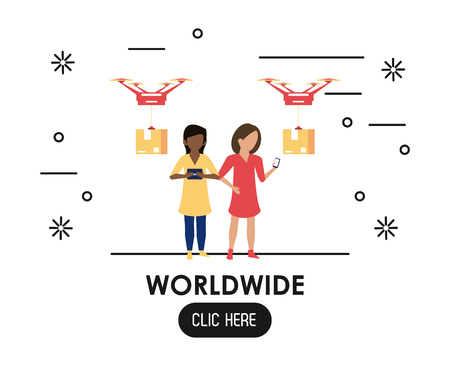Evolving Definitions of Work-Life Balance in America
In recent years, the concept of work-life balance in America has undergone significant transformation, reflecting broader shifts in workplace culture, technological advancements, and changing societal values. Traditionally, work-life balance was perceived as a simple separation between professional responsibilities and personal time. However, this definition is rapidly evolving as Americans rethink what balance truly means in today’s fast-paced environment.
One of the most influential factors driving this change is technology. The rise of remote work, digital collaboration tools, and always-on connectivity has blurred the lines between home and office. While these advancements offer greater flexibility, they also create new challenges around setting boundaries and managing expectations. For many professionals, especially those climbing the corporate ladder, mastering this digital balancing act has become a key management skill.
Generational differences further shape the American approach to work-life balance. Millennials and Gen Z employees tend to prioritize flexible schedules, mental health, and purposeful work more than previous generations. Their willingness to advocate for work environments that support their values is prompting organizations to rethink traditional structures and leadership models. In contrast, older generations may still value stability and clear separations between work and personal life, creating opportunities for intergenerational learning within teams.
Social expectations are also shifting. There is increased recognition of the importance of mental well-being and family time in achieving sustainable career success. This cultural evolution is being reflected in HR policies, benefits offerings, and even the language used by leaders when discussing team performance or productivity goals.
As American perspectives on work-life balance continue to evolve, organizations that embrace these changes—by offering flexible work options, promoting healthy boundaries, and fostering inclusive cultures—are better positioned to attract top talent and develop future leaders. Forward-thinking managers recognize that supporting employees’ holistic needs not only drives engagement but also unlocks innovation and long-term business success.
2. Key Trends Shaping the Modern Workplace
As organizations across America redefine what it means to achieve a healthy work-life balance, several key trends are emerging that are shaping the modern workplace. These trends reflect not only technological advancements but also shifting cultural attitudes and evolving employee expectations.
Remote Work: The New Norm
The most significant trend is the widespread adoption of remote work. With digital communication tools becoming more sophisticated, companies now have the capability to allow employees to work from virtually anywhere. According to a 2023 survey by Pew Research Center, over 35% of U.S. workers have the option to work remotely at least part-time, and this number is expected to grow. This shift provides employees with greater autonomy, reduces commuting time, and enables better integration between personal and professional responsibilities.
Flexible Schedules and Their Impact
Beyond location flexibility, many employers are offering flexible work hours—allowing staff to start and end their days at times that best suit their individual needs. Flexible schedules empower employees to manage family obligations, pursue further education, or simply structure their day for maximum productivity. This approach has proven popular across various industries, from tech startups to traditional corporate environments.
| Trend | Description | Impact on Work-Life Balance |
|---|---|---|
| Remote Work | Working outside a traditional office setting | Increased autonomy and reduced commute stress |
| Flexible Hours | Ability to choose start/end times | Personalized schedules support diverse lifestyles |
| Mental Health Initiatives | Programs and benefits supporting mental well-being | Reduces burnout, improves overall satisfaction |
Mental Health Prioritization in the Workplace
American companies are increasingly recognizing the importance of mental health as a core component of work-life balance. Employers are implementing programs such as Employee Assistance Programs (EAPs), virtual therapy sessions, and mindfulness training. By prioritizing mental wellness, organizations help reduce burnout and absenteeism while fostering a culture where employees feel valued beyond their output.
The Management Perspective: Navigating Change for Career Growth
From a management viewpoint, adapting to these trends isn’t just about compliance—it’s an opportunity for leaders to champion employee well-being while driving organizational performance. Managers who proactively support remote work policies, encourage flexible scheduling, and invest in mental health resources are positioning both their teams and themselves for success. As these trends continue to evolve, embracing them can differentiate high-potential managers ready for promotion in an increasingly competitive landscape.

3. Predictions for the Next Decade
As American workplaces evolve, experts forecast that work-life balance will be shaped by several transformative trends over the next decade. The rise of automation and artificial intelligence (AI) is expected to fundamentally shift how, where, and when people work. Many repetitive or time-consuming tasks will be automated, freeing up employees to focus on higher-value responsibilities and enabling more flexible schedules. This technological leap could empower professionals to better integrate their personal and professional lives, but it also means organizations must rethink how they support and measure employee productivity.
Automation and AI: Redefining Productivity
With AI-driven tools becoming mainstream, routine work will become less time-bound. Experts predict a widespread adoption of results-oriented performance metrics over traditional “face-time” requirements. Companies leading this shift will prioritize output and deliverables rather than hours logged in the office, encouraging employees to manage their own schedules for peak effectiveness and satisfaction.
Employee Values: Flexibility as a Core Benefit
Generational shifts are also influencing future work-life expectations. Millennials and Gen Z workers increasingly value flexibility, mental health, and meaningful work over rigid structures or hierarchical advancement. Organizations that offer remote or hybrid arrangements, generous wellness benefits, and clear paths for personal growth are expected to attract top talent. In fact, surveys indicate that flexibility may soon rival salary as a top deciding factor when Americans choose an employer.
The Rise of Personalized Work-Life Strategies
Another key prediction is the move toward personalized approaches to work-life balance. Technology will enable more tailored solutions—such as AI-powered scheduling assistants or customized benefit packages—that recognize the unique needs of each employee. Forward-thinking companies will use data-driven insights to proactively support their teams, reducing burnout and increasing retention rates.
In summary, the next decade in America’s workforce is poised for dramatic change as automation, AI, and evolving employee values converge. Employers who embrace these shifts—and prioritize innovative strategies for work-life integration—will lead the way in attracting, retaining, and empowering high-performing teams.
4. Opportunities for Career Growth and Advancement
As work-life balance becomes a cornerstone of the American workplace, ambitious professionals have new pathways to accelerate their career growth and secure leadership roles. The evolving landscape provides opportunities not only to prioritize well-being but also to showcase adaptability, strategic thinking, and emotional intelligence—key traits sought by modern employers.
Leveraging Flexibility for Visibility
Remote and hybrid work environments encourage self-management and proactive communication. Employees who excel in these settings can stand out by:
- Demonstrating autonomy and initiative in project management
- Mastering digital collaboration tools
- Proactively updating managers on progress and outcomes
- Volunteering for cross-functional teams or high-visibility assignments
Developing Leadership Skills in New Paradigms
The shift toward flexible schedules and decentralized teams requires leaders who can inspire trust, manage diverse groups, and drive results without constant oversight. Aspiring leaders should focus on:
- Building strong virtual communication skills
- Cultivating empathy for team members’ unique work-life needs
- Leading with transparency and accountability
- Pursuing training in remote team management and digital transformation
Skills Most Valued in Future-Focused Workplaces
| Skill Category | Description | Promotion Potential |
|---|---|---|
| Adaptability | Ability to navigate change and ambiguity with confidence | High – Critical for leadership roles in dynamic environments |
| Digital Fluency | Proficiency with collaboration tools, data analysis, and workflow automation | Medium to High – Essential for managing remote/hybrid teams |
| Emotional Intelligence (EQ) | Understanding and managing one’s own emotions and those of others | High – Vital for team cohesion and morale in flexible workplaces |
| Strategic Communication | Clear, concise, and persuasive messaging across channels | Medium – Supports influence and visibility across dispersed teams |
| Work-Life Integration Advocacy | Pushing for policies that support holistic employee well-being | Medium – Reflects forward-thinking leadership qualities |
Navigating Internal Mobility and Promotions in the New Era
The future of work-life balance demands that professionals take ownership of their career trajectories. This involves regular skills assessments, seeking mentorship within distributed organizations, participating in company-sponsored upskilling initiatives, and being vocal about career aspirations during performance reviews. Companies are increasingly rewarding those who champion both productivity and well-being, recognizing them as future-ready leaders.
5. Challenges and Barriers to Achieving Balance
Despite growing awareness and innovation in work-life balance strategies, American professionals continue to face significant challenges.
Burnout: The Lingering Threat
One of the most persistent obstacles is burnout. As technology blurs the line between personal and professional time, employees often find themselves “always on.” This constant connectivity leads to exhaustion and disengagement, negatively impacting both productivity and well-being. Leaders must recognize that simply offering flexible hours is not enough; they need to set clear boundaries and model healthy behaviors to prevent burnout from becoming endemic.
Unequal Access to Flexibility
The promise of remote work and flexible schedules is not equally accessible across all industries or job types. While many white-collar roles offer hybrid or fully remote options, frontline workers in sectors like healthcare, retail, and manufacturing have limited flexibility. This disparity creates a two-tiered workforce, where some benefit from progressive policies while others are left behind. Organizations must innovate to provide equitable solutions—such as shift-swapping platforms or predictable scheduling—for every employee, not just the digital elite.
Company Culture Misalignment
Even with policies in place, company culture can be a significant barrier if leadership does not authentically support work-life balance. In many workplaces, there remains an unspoken expectation that high performers are available 24/7 or that “face time” equates to dedication. Without genuine buy-in from management and alignment between stated values and daily practices, employees may hesitate to take advantage of flexibility for fear of career repercussions. For sustainable change, leaders must actively champion balance by rewarding results over hours logged and fostering an environment where well-being is prioritized.
Looking Forward: Overcoming Barriers
Tackling these challenges requires ongoing commitment from both individuals and organizations. By addressing burnout proactively, expanding access to flexibility, and ensuring cultural alignment from the top down, companies can unlock the full potential of their workforce while paving the way for a healthier future of work in America.
6. Action Steps for Organizations and Individuals
Building a Culture of Sustainable Work-Life Integration
For American organizations aiming to stay competitive and retain top talent, fostering work-life balance is no longer optional—it’s essential. From a management perspective, the following action steps can help create an environment where employees at all levels thrive without sacrificing personal well-being.
Organizational Strategies
1. Embrace Flexible Work Arrangements
Offer remote work options, flexible hours, compressed workweeks, or job-sharing arrangements. Encourage leaders to focus on results rather than hours logged, ensuring that productivity remains high while employees enjoy greater autonomy.
2. Prioritize Employee Well-being Programs
Invest in mental health resources, wellness stipends, and employee assistance programs (EAPs). Promote open discussions around stress management and encourage participation in wellness initiatives as part of the organizational culture.
3. Train Managers to Model Balance
Equip managers with the skills to recognize burnout and proactively address it. Encourage leadership to set boundaries themselves—taking time off, avoiding after-hours emails, and supporting team members who need to unplug.
4. Set Clear Expectations and Boundaries
Communicate transparent guidelines on availability and response times. Use shared calendars and project management tools to align workloads and minimize unnecessary meetings or interruptions outside standard working hours.
Individual Strategies
1. Advocate for Your Needs
Employees should feel empowered to discuss workload concerns and request flexible arrangements when needed. Open dialogue with supervisors about what work-life integration means personally can lead to tailored solutions that benefit both parties.
2. Establish Personal Boundaries
Create a dedicated workspace at home if possible, set clear start and end times for the workday, and communicate these boundaries with colleagues and family members. Schedule regular breaks to recharge throughout the day.
3. Invest in Continuous Learning
Pursue professional development opportunities that enhance both career advancement and adaptability in a changing workplace landscape. Stay informed about new technologies or practices that support efficiency and flexibility.
A Shared Commitment to Balance
The future of work-life balance in America will be shaped by proactive efforts from both organizations and individuals. By adopting these practical strategies from a management perspective, companies can foster a culture where sustainable work-life integration is not just a perk—but a core driver of engagement, retention, and long-term success.


